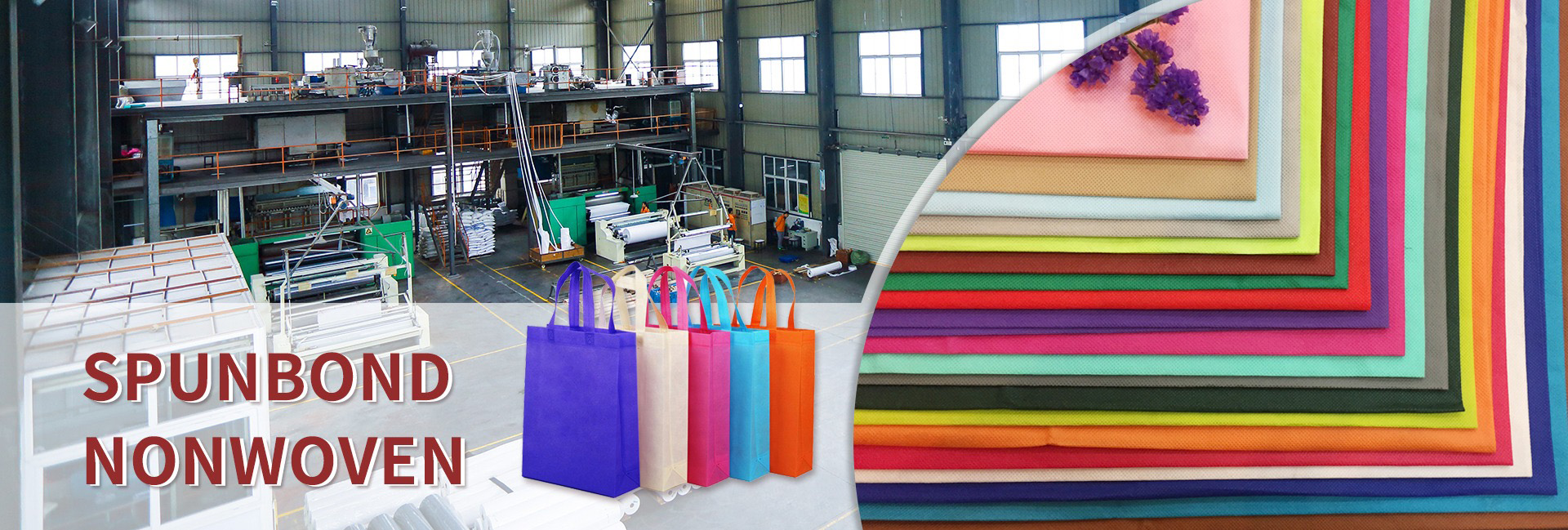Flame retardant PP spunbond nonwoven fabric has achieved a dual breakthrough in flame retardancy and practical value through material modification, process innovation, and performance collaborative design, while retaining the traditional protective properties of spunbond nonwoven fabric. It has shown unique advantages in special protective scenarios such as medical and industrial applications.
Material modification: Building flame retardant barriers at the molecular level
The core breakthrough lies in achieving intrinsic flame retardancy of polypropylene substrates through precise fusion of flame retardants. The current mainstream technologies include:
Additive flame retardant system: Mix halogen-free flame retardants (such as phosphorus and nitrogen compounds) into PP slices at a ratio of 10% -30%, and evenly disperse them in the fibers after melt spinning. Flame retardants decompose at high temperatures to produce inert gases (such as ammonia and water vapor), dilute oxygen and isolate heat sources, while forming a molten coating to prevent flame spread, overcoming the toxicity and corrosiveness problems of traditional halogenated flame retardants.
Graft copolymerization modification: Flame retardant monomers (such as phosphate esters) are grafted onto PP molecular chains through radiation or chemical initiators, forming covalent bonds between flame retardant groups and polymers, solving the defects of easy migration and affecting fiber strength of additive flame retardants, and improving the durability of flame retardant effects.
This molecular level modification gives PP fibers their own flame retardant ability, rather than relying on surface coatings, avoiding efficiency degradation caused by coating peeling.
Process optimization: Balancing flame retardancy and spunbond process characteristics
The high-temperature melting environment (usually 200-230 ℃) of spunbond technology poses a challenge to the stability of flame retardants, and efficiency breakthroughs can be achieved through process adjustments
Flame retardant pretreatment: microencapsulate the flame retardant to maintain stability at spinning temperature, avoiding premature decomposition and affecting fiber formation; At the same time, microcapsules rupture and release active ingredients during high-temperature flame retardancy, forming an “on-demand response” flame retardant mechanism.
Fiber structure regulation: By adjusting the spinning speed and stretching ratio, finer flame-retardant PP fibers (diameter can be reduced to 8-15 microns) are prepared, increasing the fiber specific surface area, making the contact between the flame retardant and the flame more complete, and accelerating the flame retardant reaction; At the same time, a dense fiber network can enhance the integrity of the carbon layer formation and improve the insulation effect.
Post finishing and strengthening: Low temperature plasma treatment is applied to spunbond non-woven fabrics, introducing polar groups to enhance the bonding strength between fibers and flame retardant additives, further improving flame retardant durability without damaging the breathability and mechanical properties of the fabric.
Performance synergy: breaking through the contradiction between “flame retardancy and practicality”
Traditional flame retardant materials often face the dilemma of “increasing flame retardancy leads to decreased breathability and strength”. Flame retardant PP spunbond nonwoven fabric achieves balance through collaborative design:
Compatibility of flame retardancy and protection: In the medical isolation suit scene, flame retardant PP spunbond non-woven fabric not only maintains its barrier properties against body fluids and pathogens (through a dense fiber structure), but also quickly self extinguishes when exposed to open flames (such as surgical electric knife sparks) (usually with a continuation time of less than 2 seconds and no melting droplets), avoiding secondary injuries to medical staff.
Combining lightweight and durability: By optimizing the proportion of flame retardants and fiber structure, the weight of the fabric is maintained at 40-60g/㎡ (equivalent to ordinary medical spunbond fabric), ensuring lightweight wearing; At the same time, the fracture strength can reach 20N/5cm or more, meeting the daily needs of tearing and friction, and overcoming the problem of brittle flame retardant materials.
Balancing environmental protection and safety: Adopting a halogen-free flame retardant system, the smoke density during combustion is low (light transmittance>60%), and the release of toxic gases meets the GB/T 2408-2021 standard, avoiding the risk of suffocation caused by thick smoke or toxic gases in fires, especially suitable for closed medical environments.
Scenario adaptation: Targeted breakthroughs based on demand
In different application scenarios, the breakthrough in the effectiveness of flame-retardant PP spunbond nonwoven fabric is reflected in precise adaptation:
Operating room scenario: It is necessary to withstand the instantaneous high temperature generated by high-frequency electric knives. By adding anti drip agents (such as polytetrafluoroethylene micro powder), it is possible to prevent molten material from dripping and scalding patients or medical staff, while maintaining the fabric’s tolerance to alcohol disinfection.
Industrial protection scenario: In environments such as chemical and laboratory environments where flammable substances may come into contact, increasing the limit oxygen index (LOI>28%) ensures that the fabric can still effectively flame retardant in oxygen rich environments, while maintaining good moisture absorption and sweat wicking properties, improving the comfort of long-term wear.
In the future, with the application of nano flame retardant technology (such as graphene based flame retardants), flame-retardant PP spunbond nonwoven fabrics are expected to achieve a breakthrough of “lower addition amount, higher flame retardant efficiency, and better comprehensive performance”, further expanding their application space in the high-end protection field.
Dongguan Liansheng Non woven Technology Co., Ltd. was established in May 2020. It is a large-scale non-woven fabric production enterprise integrating research and development, production, and sales. It can produce various colors of PP spunbond non-woven fabrics with a width of less than 3.2 meters from 9 grams to 300 grams.
Post time: Aug-05-2025

